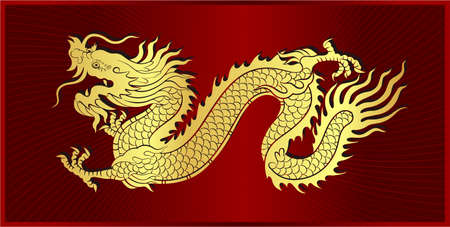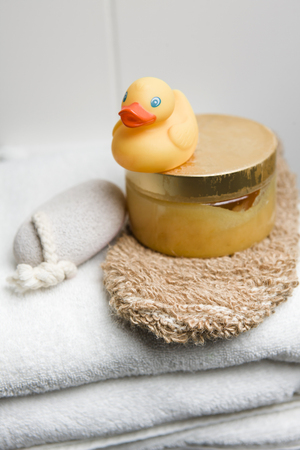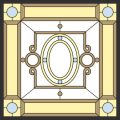1. Understanding Feng Shui in the American Context
Feng Shui, an ancient Chinese practice, is all about creating harmony between people and their environment. In the United States, where homes and lifestyles are quite different from traditional Chinese settings, Feng Shui has taken on a unique local flavor. Understanding how these concepts translate into American real estate can help homeowners make informed decisions, especially when it comes to spaces like bathrooms and wealth corners.
What Is Feng Shui?
At its core, Feng Shui focuses on the flow of energy—also known as “chi”—through living spaces. The goal is to arrange rooms and furniture in a way that promotes positive energy, health, prosperity, and well-being. In classic Feng Shui, every part of the home has a symbolic meaning, including areas linked to wealth and abundance.
Adapting Feng Shui for American Homes
American houses often have open floor plans, multiple bathrooms, attached garages, and other features that differ from traditional Asian architecture. This means Feng Shui guidelines need to be adjusted to fit the U.S. context. For example, the wealth corner—traditionally found in the far back left corner from your front door—might now be located in a kitchen, bedroom, or even a bathroom depending on your home’s layout.
Common Elements of Feng Shui in US Real Estate
| Feng Shui Concept | Traditional Interpretation | How Its Applied in the US |
|---|---|---|
| Wealth Corner (Xun) | Back left corner from entry; focus on abundance | Might fall in various rooms due to open layouts; often enhanced with plants or art |
| Bathroom Placement | Avoid placing in wealth or health areas | Bathrooms are common throughout homes; adjustments needed to minimize negative impact |
| Entryway (Mouth of Chi) | Main source of energy for home | Emphasis on welcoming entries; clear pathways and good lighting recommended |
Cultural Adaptations and Practical Tips
Because American homes may not always allow for perfect Feng Shui placement, homeowners often use practical solutions. For instance, if a bathroom falls within a home’s wealth area, people might keep it clean and tidy, add lush green plants, or use artwork that symbolizes prosperity. The key is blending traditional wisdom with modern lifestyles.
2. Identifying Wealth Corners in U.S. Homes
Understanding the Bagua Map in American Real Estate
The concept of a “wealth corner” comes from Feng Shui, an ancient Chinese system for creating balance and harmony in living spaces. In the United States, many homeowners and real estate investors are starting to recognize how these principles can impact property value and overall well-being. The most common way to find the wealth corner is by using the Bagua map—a tool that overlays a grid onto your home’s floor plan.
How to Apply the Bagua Map
In American homes, the Bagua map is typically aligned with the main entrance. Imagine standing at your front door, facing inside. The far left corner of your house (or any room) from this perspective is known as the “wealth corner.” This area is believed to influence prosperity, financial growth, and abundance.
| Bagua Area | Location in Home | Associated Life Aspect |
|---|---|---|
| Wealth Corner | Farthest left from front entrance | Money & Prosperity |
| Career Area | Front center by entrance | Work & Opportunities |
| Relationship Area | Farthest right from entrance | Love & Partnerships |
Why It Matters for Homeowners and Investors
Knowing where the wealth corner is located can help homeowners make decisions about décor, furniture placement, or renovations. For example, placing healthy green plants or symbols of abundance (like a bowl of coins) in this area may boost feelings of security and confidence. For real estate investors, understanding Feng Shui can be a unique selling point when marketing homes to buyers who appreciate holistic living environments. Even small adjustments in the wealth corner might make a property feel more inviting and prosperous—qualities that can translate into higher demand and potentially better resale value.

3. The Typical Placement of Bathrooms in U.S. Real Estate
In American homes, the placement of bathrooms is often influenced by practical needs, privacy, and modern convenience. However, when looking at these layouts from a feng shui perspective—especially in relation to the “wealth corner” or the southeast part of a home—understanding where bathrooms typically appear can be useful for both homeowners and real estate investors.
Common Bathroom Locations in U.S. Homes
Bathrooms in the U.S. are usually found in several key areas:
- Near Bedrooms: Master bathrooms are almost always attached to the primary bedroom for privacy and comfort. Other full or half baths are commonly placed near additional bedrooms.
- Central Hallways: Many houses feature a hallway bathroom accessible to guests and family members, often located centrally within the home.
- Near Living Spaces: Powder rooms (half baths) are frequently positioned near living rooms or entryways for guest use.
Typical Floor Plan Patterns
| Home Style | Bathroom Location | Relation to Wealth Corner (Southeast) |
|---|---|---|
| Ranch-Style | Clustered near bedrooms on one side | Sometimes overlaps with southeast if bedrooms are there |
| Two-Story Suburban | Main bath upstairs; powder room near entrance/living area | Southeast corner may contain a bath depending on stair/room layout |
| Open-Concept Modern | Pushed to sides or corners for privacy; master bath often in rear or side | Southeast location varies widely; sometimes includes bathroom space |
The Importance of Bathroom Placement in Feng Shui
If a bathroom is located in the southeast (the wealth corner), some feng shui practitioners believe it could potentially drain positive energy related to wealth. In the U.S., because of varying floor plan styles, it’s not uncommon for a bathroom to land in this sector, especially in ranch-style or L-shaped homes where bedrooms and their attached baths line one end of the property.
What This Means for Homeowners and Buyers
If you’re considering feng shui principles while buying or renovating a house, it’s helpful to map out your home’s floor plan using a compass. Identify if any bathrooms fall into the southeast sector and consider remedies if you’re concerned about energy flow. Understanding typical American layouts gives you an advantage when making decisions about property value and personal well-being.
4. Potential Impacts of Bathroom Placement on Wealth Energy
Understanding Feng Shui Theories About Bathrooms in Wealth Corners
In traditional Feng Shui, the wealth corner—often called the “money area”—is considered a powerful spot for attracting prosperity and abundance. This area is usually found in the far left corner of a home or room when standing at the entrance, based on the Bagua map. Placing a bathroom in this location can be seen as problematic because bathrooms are associated with water and drainage, symbolizing money flowing away or being washed out of your life.
Key Feng Shui Beliefs
| Theory | Interpretation |
|---|---|
| Bathroom drains wealth energy | Water going down the drain represents financial resources being lost |
| Bathrooms carry negative energy (Sha Chi) | Bathrooms are thought to collect and spread negative vibes that can undermine prosperity |
| Cures and remedies can help | Simple adjustments like plants, crystals, or mirrors may help neutralize negative effects |
American Real Estate: Case Studies and Local Perspectives
While not everyone in the US follows Feng Shui strictly, many homeowners and real estate professionals have noticed patterns that align with these ancient principles. For example, some realtors report that houses with bathrooms located in the wealth corner often take longer to sell or may fetch lower prices compared to similar homes without this layout issue. Homeowners sometimes share stories about experiencing unexpected expenses or feeling financially “stuck” after moving into such homes.
Examples from US Real Estate Experiences
| Scenario | Reported Impact |
|---|---|
| Bathroom in back left corner of house (wealth area) | Sellers mention more difficulty attracting buyers; buyers express concerns after learning about Feng Shui implications |
| Bathroom placement away from wealth area | No reported issues related to financial flow; some owners feel more confident about their finances |
| Remedies applied (e.g., adding plants or art) | Some owners say they feel a shift in energy and fewer financial worries over time |
Blending Feng Shui with American Lifestyles
Many Americans adapt Feng Shui ideas to fit their own homes and lifestyles. Instead of major renovations, people often use easy fixes like keeping bathroom doors closed, decorating with vibrant plants, or placing small decorative items that symbolize wealth near the bathroom. These simple actions aim to reduce any possible negative impact on financial well-being while respecting both tradition and practicality.
5. Practical Remedies and Design Tips for U.S. Homeowners
Understanding the Challenge: Bathrooms in Wealth Corners
In Feng Shui, the placement of a bathroom in the wealth corner (often the far left corner from your front door) can present challenges to maintaining positive energy flow and prosperity. In many American homes, modern layouts and renovation trends sometimes result in bathrooms being placed in these critical zones. Fortunately, there are actionable strategies you can use to minimize negative influences and enhance financial luck—without needing to undertake major renovations.
Actionable Strategies for Enhancing Wealth Energy
| Remedy/Modification | Description | How It Helps |
|---|---|---|
| Keep Bathroom Doors Closed | Make it a habit to keep doors to bathrooms shut at all times. | Prevents wealth energy from “draining away” through plumbing fixtures. |
| Add Greenery or Plants | Place a small, easy-care plant (like pothos or bamboo) in the bathroom or just outside its door. | Lively plants symbolize growth and help uplift the energy of the space. |
| Use Mirrors Wisely | Hang a mirror on the outside of the bathroom door if possible. | Bounces energy back into the home, reducing loss of positive chi. |
| Upgrade Fixtures and Decor | Choose gold- or green-toned accents, plush towels, and attractive storage solutions. | Gold represents wealth; green is associated with growth and abundance in Feng Shui. |
| Aromatherapy & Cleanliness | Keep bathrooms sparkling clean and use essential oils like citrus or mint. | A clean, fresh-smelling space invites good fortune and repels stagnation. |
Design Modifications Tailored to American Homes
- Add Rugs or Mats: Use plush rugs in earth tones near sinks and toilets to anchor energy and provide warmth.
- Install Soft Lighting: Opt for adjustable lighting that creates a calm, welcoming atmosphere rather than harsh overhead lights.
- Curtains or Frosted Glass: For bathrooms with windows in the wealth area, use sheer curtains or frosted glass to let in light while maintaining privacy and energetic boundaries.
- Decorate with Symbols of Prosperity: Consider artwork featuring water elements (like gentle rivers or lakes), coins, or lush landscapes that evoke abundance without overdoing it.
- Minimize Clutter: Store toiletries out of sight to maintain an organized feel. Clutter can block both physical movement and positive chi flow.
Sample Bathroom Wealth Corner Makeover Plan
| Step | Description |
|---|---|
| Add live plant on shelf by window | Select a low-maintenance plant like snake plant for air purification and energy boost. |
| Hang mirror on outside of bathroom door | If allowed by layout, affix a decorative mirror to reflect energy back into the hallway or room. |
| Select gold-accented soap dispensers/towel hooks | Add subtle metallic touches that symbolize prosperity without overpowering the decor style. |
Avoid Common Pitfalls
- Avoid displaying images of rough seas, storms, or emptiness in bathroom art—opt for calm waters and fullness instead.
- Avoid leaky faucets; promptly fix any plumbing issues as they symbolically represent money leaking away from the household.
- Avoid using red décor extensively in bathroom wealth corners as this element may not harmonize well with water features typical of this space in Feng Shui theory.


